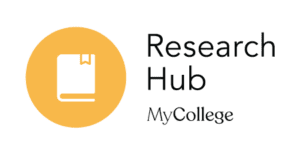10 dimensions of holistic school leadership for a greater sense of shared purpose

In our state-funded school, Southend High School for Boys, the primary purpose of leadership is to create an environment where others thrive (Sergiovanni, 1992). Our school is located on the outskirts of London and serves an economically and socially diverse community. We have 1,200 students, aged between 11 and 18, and have secured a national reputation for success in academic outcomes and sport.
As a school, we want all staff and students to feel energised to achieve their very best. One of our approaches has been to research and examine the qualities and characteristics of the most effective workplace relationships – not only between managers and their team members, but also between peers. These traits are not fixed, unchangeable aspects of individual personalities, but rather behaviours that can be identified, discussed and improved. We refer to them as the 10 Dimensions of Holistic Leadership.
Holistic school leadership
As leaders, we learned to recognise the importance of our behaviour in securing a climate for growth, excellence and job satisfaction (Greenfield, 2004). We know that sustaining the right climate through holistic leadership has many benefits, including: improving the reputation of the school; higher levels of effectiveness and greater efficiency; a reduction in absence and staff turnover (PriceWaterhouseCoopers, 2008).
Leaders and managers play a key role in creating a climate in which all colleagues can thrive and all staff contribute to its endurance (Covey & Merrill, 2006). The 10 Dimensions of Holistic Leadership form part of the annual evaluation of every leader by their team members. It’s an unusual approach, but the behaviours we are seeking in ourselves are only the same as those we demand in others. Our understanding of holistic leadership, which has been designed and developed within the school, involves all staff working together to:
- Eliminate unnecessary tasks and unproductive ways of working. We all contribute to refining our approaches – if there’s a better way, we share it
- Provide mutual support for colleagues across the school because everyone needs a ‘trusted friend’ sometimes
- Recognise and avoid the effect of unprofessional negativity. If something’s not right, say it first (and only) to the person who needs to hear it
- Provide assistance for colleagues who are struggling before they become overwhelmed and overburdened. Watch out for and support each other by encouraging measured and efficient working practices
- Watch for the vicious cycle of excess workload, which leads to reduced productivity and a greater workload. We do what needs to be done and do it to our best. We plan ahead to make it happen, we stop when it really is too much and, if we feel we cannot stop, we talk with our line manager. We adapt to fit the task to the time
- Ensure that all colleagues sustain a healthy lifestyle by encouraging each other to pursue interests and activities, such as physical fitness and cultural stimulation, that provide genuine relaxation. We show an interest in what we each do outside of work
- Make sure instructions for all tasks are clear, simple and consistent. Clarity takes longer than confusion, but it saves time and reduces anxiety
- Consider how we promote empathy as well as excellence, efficiency and effectiveness
- Examine how we respond under pressure. Learning the signs of pressure in ourselves and in our colleagues and practising the tools to manage pressure before it overflows
- Be open to identify the barriers to becoming more effective by providing permission and trust for colleagues to develop their professionalism.
For us, teams have become more effective, colleagues more fulfilled, issues more easily raised and addressed, decisions taken more quickly and actions more readily agreed.
Conclusion
The framework of our 10 Dimensions of Holistic Leadership (below) illustrates the importance of each strand and its benefits. It is an excellent tool for self-evaluation and has been transformative for many colleagues in our school. For example, the framework has made it easier for teachers to discuss the dynamics of their relationship with their Head of Department.
Previously, some staff were frustrated by late changes or additions to their duties in circumstances where the line manager didn’t want to ‘bother them’ until the last minute. Support staff colleagues have also been able to indicate when they have felt a lack of direction or support from their line manager, and – equally – when they wanted to be ‘left alone’ to do their job. Some of our employees were able to articulate that their competence, positivity and professionalism didn’t mean that they didn’t also have a genuine need to be explicitly thanked.
From our experience, there are genuine benefits when workplace relationships are aligned, as best as possible, within these 10 dimensions. For us, teams have become more effective, colleagues more fulfilled, issues more easily raised and addressed, decisions taken more quickly and actions more readily agreed. And all with a greater sense of shared purpose.
This article was published in January 2018 and reflects the terminology and understanding of research and evidence in use at the time. Some terms and conclusions may no longer align with current standards. We encourage readers to approach the content with an understanding of this context.
References
- Covey, S. M. R. and Merrill, R. R., 2006. The speed of trust: The one thing that changes everything New York: Free Press.
- Greenfield, W. D., 2004. Moral leadership in schools. Journal of Educational Administration, 42( 2), pp. 74-196.
- PriceWaterhouseCoopers., 2008. Building the case for wellness. London: PriceWaterhouseCoopers.
- Sergiovanni, T. J., 1992. Moral Leadership: Getting to The Heart of School Improvement. California: Jossey-Bass Inc.









